How to protect your local business enterprise from review removal scams
Train your staff to protect your Google Business Profile from scammers and extortionists—and keep a strong grasp over your online reputation.
Google has previously signaled just how critical reviews are. There may be a section missing from your company policy that could cost your brand, your location managers, and your franchisees dearly.
If you haven’t standardized operating procedures surrounding actions that should be taken when suspicious reviews appear on any of your enterprise’s Google Business Profiles (GBPs), untrained staff are at risk of falling victim to extortionists and scammers.
Entire business models have been created around the fictitious service of guaranteed GBP review removal. Before anyone associated with your brand makes the expensive mistake of being fooled in a moment of panic, read this piece, build training materials around it, and distribute it to all relevant members of your organization.
The two types of review removal scammers
Teach everyone at your company who’s managing your brand’s reputation to recognize these two main varieties of bad actors:
- Solo extortionists
A branch of your business receives a suspicious negative review that’s quickly followed by an offer to remove the review for a fee. If the content of the negative review is sufficiently upsetting, the untrained recipient may be distressed enough to respond to the scammer (and even agree to send them money).
Task: Update your policy to include a variant of the following language:
If you notice a suspicious negative review on a Google Business Profile you are managing and receive an email or any other form of communication offering to remove the review for a fee, do not respond to the sender. Instead, take screenshots of the review and follow-up communication and immediately report the incident to the _________ department for internal investigation.
- Review removal services
Upon receiving a suspicious negative review, an untrained person associated with your brand may turn to Google to search for terms like “remove negative review” or “review removal service.” They’ll be met with both paid ads (which Google allows in their Ads program) and with organic results offering to solve the problem by removing the unwanted review.
These models typically operate on the guarantee that the client will only pay if the review is removed. They frequently claim to have a special relationship with Google to give them enhanced powers of review removal or a back door methodology to support success.
All such offers are illegitimate because review removal is entirely controlled by Google, and Google doesn’t form special relationships of this kind with any brand. It’s unfortunate that Google accepts ad money from these businesses, and your organization needs to defend itself from their baseless claims, especially in moments of stress resulting from receiving a very damaging negative review.
Task: Update your policy to include your own version of the following language:
If you notice a suspicious negative review on a Google Business Profile you are managing, do not contact any third party for paid removal of the review. Do not engage in any offer from a business guaranteeing removal. These offers are scams. Instead, screenshot the negative review and immediately report the incident to the _________ department for internal investigation.
If you’re communicating this policy to in-house brand staff, the next section will cover the appropriate steps your business can take when encountering a suspicious negative review. If, instead, you’re communicating policy to franchisees, be sure to send this article to them so they can be prepared to properly address review removal scams.
The two types of suspicious reviews
Just as scammers come in two guises, suspect reviews can take two different forms.
- Fake negative reviews
This is the more obvious of the two varieties of review spam. A fake negative review of your business occurs either when a) the person leaving the review hasn’t had a legitimate interaction with your business, or b) the person has had a legitimate interaction with your business but is lying about an experience.
In such cases, the reviewer typically leaves a low-star rating and claims to have had a terrible experience with the company.
- Fake positive reviews
This is the less obvious of the two varieties of review spam. Suspicion may not immediately be triggered by seeing positive reviews come in for a location of your brand, but, as with negative reviews, they can be written by non-customers and describe non-existent experiences.
Beware of these two forms of positive review spam:
- The spammer leaves a mostly positive review with a star rating that’s slightly lower than the Google Business Profile’s average star rating. For example, a GBP may have a 4.7 average star rating as a result of receiving mostly 5-star reviews with a few less positive reviews thrown into the mix. The spammer leaves a 4-star review in an effort to begin eroding the overall star rating. The spammer may leave multiple reviews of this kind to negatively impact the average.
- The spammer leaves multiple 5-star reviews over a short period of time in hopes of triggering Google’s badge of shame on the GBP of their victim. Google has recently strengthened their policy in an effort to combat review spam and now has the ability to place public warnings and restrictions on GBPs which they suspect of engaging in review spam.
The following screenshot captured by Mike Blumenthal shows a profile bearing a notification that review posting has been disabled due to suspected spam:
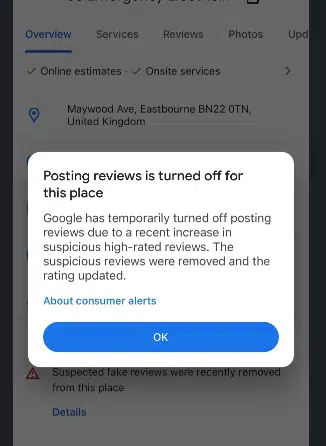
Google hopes that this new level of penalization will help protect legitimate local enterprises from review spam, but, unfortunately, it can be used as a competitive spam tactic by any bad actor hoping to get a competitor penalized by making them appear to be the benefactor of multiple fake positive reviews.
Task: Educate all parties who are responsible for review management to recognize that spam reviews can be either positive or negative.
First line of defense: knowing Google’s definition of review spam
When a suspicious review shows up on one of your brand’s GBPs, it’s natural to wonder first about the identity of the reviewer. They might be a random member of the public, a competitor, an employee of a dubious marketing firm, a present or past employee, or a personal adversary of someone at the business.
While it can be helpful if you can sleuth out who the reviewer might be and guess at their motivations for trying to harm your brand, the core question to focus on is this:
Does this content violate Google’s prohibited and restricted content policy?
Despite the claims of shady review removal services, there’s no hope of a spam review being removed unless Google believes it falls afoul of their rules.
In creating your own policy for staff and franchisees, you should carefully read through the above linked document, which codifies Google’s definitions of:
- Fake engagement
- Impersonation
- Misinformation
- Misrepresentation
- Hate speech
- Defacement and mischief
- Other forms of prohibited content
If a review your brand has received at any of its locations can be clearly proven to fall under one or more of these forbidden origins or behaviors, you have a hope (but never a guarantee) of having the content removed by Google.
Second line of defense: taking legitimate steps for review removal
If you’re convinced that a review you’ve received violates Google’s policy, you have a variety of options for seeking removal.
Communicate all of the following to appropriate parties in or associated with your organization, based on their permissions to take actions surrounding Google Business Profiles:
- Document the suspicious reviews
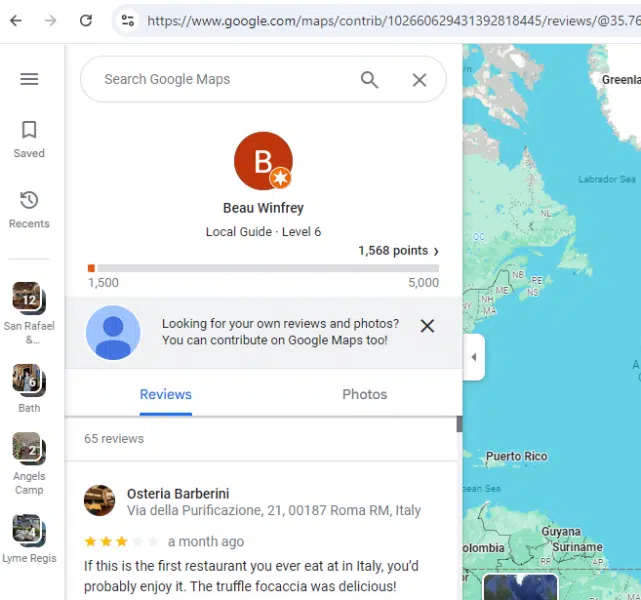
Take screenshots of both the reviews, themselves, and the profiles of the suspicious reviewers. By clicking on the avatar of a specific reviewer, you’ll be taken to a Google Maps-based entry for them, which catalogs all the reviews that person has written. Make a record of the URL of their profile for your documentation.
- Flag the suspicious reviews
While signed into the Google account which manages the GBP that’s received a suspicious review, look up your business by name to find the New Merchant Experience dashboard in Google’s results:
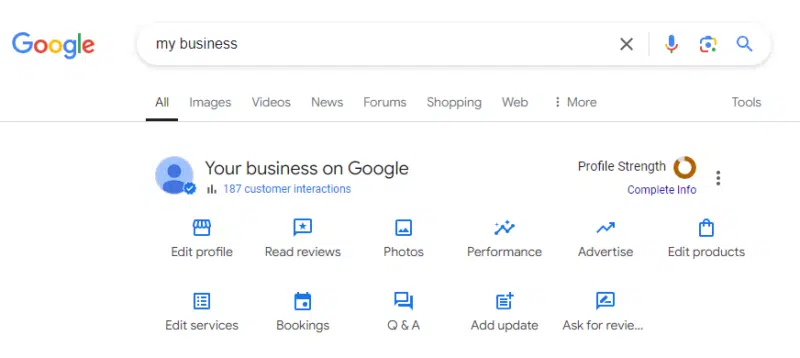
Click on the “read reviews” section and find the suspicious review. Click on the three dots to the right of the review to bring up the “report review” popup.
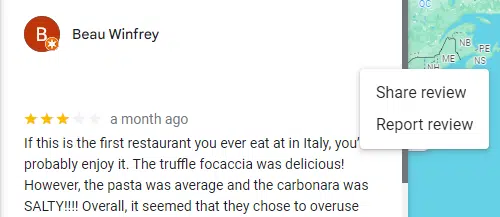
You’lll be shown a variety of options, like the following, for explaining why you think the review violates Google’s policy:
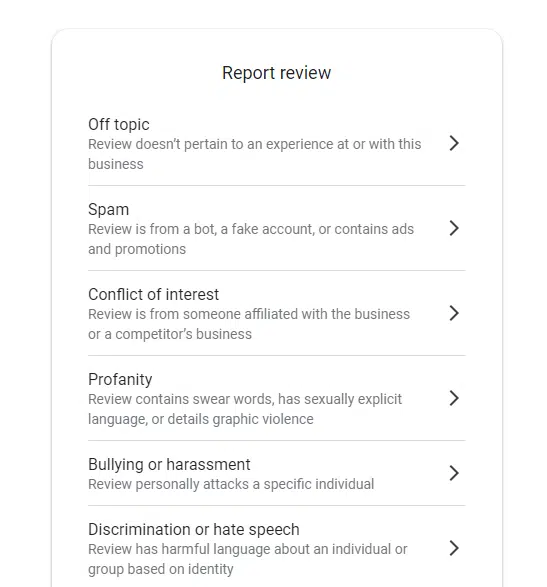
If you’ve received a suspicious review, flagging it in this manner is the simplest way to kick off your efforts to have it removed.
Wait three business days without taking any further action. Then, use the Google Review Management Tool to check the status of the review(s) you’ve flagged.
If you find that the reviews have been removed, you’ve succeeded in your task, but it’s not uncommon for Google to initially refuse to remove reviews, even when they clearly violate their guidelines.
A drawback of the flagging process is that there’s no way to share your documentation when using it. If your reviews haven’t been removed three days after being flagged, move on to the next step.
- Appeal Google’s decision
While inside the Google Review Management Tool, click on the link to “appeal decision.” This will bring up a form for sharing the documentation you’ve created to make your case for why a review violates their guidelines. Filling out this form will generate a Google support ticket. You’ll also be sent a case ID—be sure to record it for future reference.
If your appeal of a denied removal request succeeds, you’re done. If, however, the spam reviews remain on your profile, move onto the next step.
- Report via the Google Business Profile Help Community
The Google Business Profile Help Community is staffed by volunteers called Product Experts (PEs) who have the power to escalate problems to Google staff. Create a post in this forum that includes your case ID and all of your documentation regarding the spam reviews.
The thoroughness of your documentation is critical. If a PE agrees with you that a review violates the guidelines, they can escalate the issue and let Google know that the initial denial of removal should be reconsidered.
Hopefully, this fourth step will result in removal. If not, however, there are two other steps available to you.
- Bring PR to bear
If, despite carefully following all of Google’s own recommended steps for seeking review removal, the spam reviews remain on your GBPs, you may need to consider taking steps to publicize the problem. While earning a few suspicious reviews here and there isn’t typically newsworthy, if they’re causing serious damage to your brand’s reputation and revenue, you may be able to interest reporters in your story. Sometimes, Google will take notice of a spam problem only after it has become public news.
- Seek legal counsel
If a spam review alleges dangerous or illegal practices, your enterprise should involve its legal team. If you’re able to identify the reviewer, your lawyers may be able to take cease-and-desist actions to request that the reviewer remove their own review.
Such activities should only be undertaken by qualified legal professionals to avoid unwanted outcomes. If a scammer attempts to extort money from your brand in exchange for removal of a review they’ve published, you should immediately contact your legal advisors.
Take control and protect your local footprint
Knowing the potential threat posted by review-oriented scams, you need to create new training materials for everyone associated with your brand’s reputation management. Carefully consider the permissions given to various levels of staff members and franchisees as well as training. Untrained personnel represent a significant risk to the health of your brand and all of its locations.
Though Google needs to do a better job of both vetting companies in their Ads program and in communicating their internal policies and procedures with the business community, you can take strong steps to defend your local business from scams and extortion.